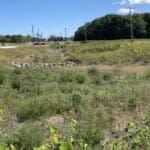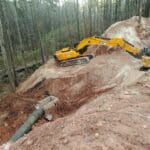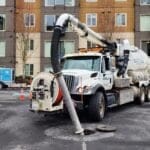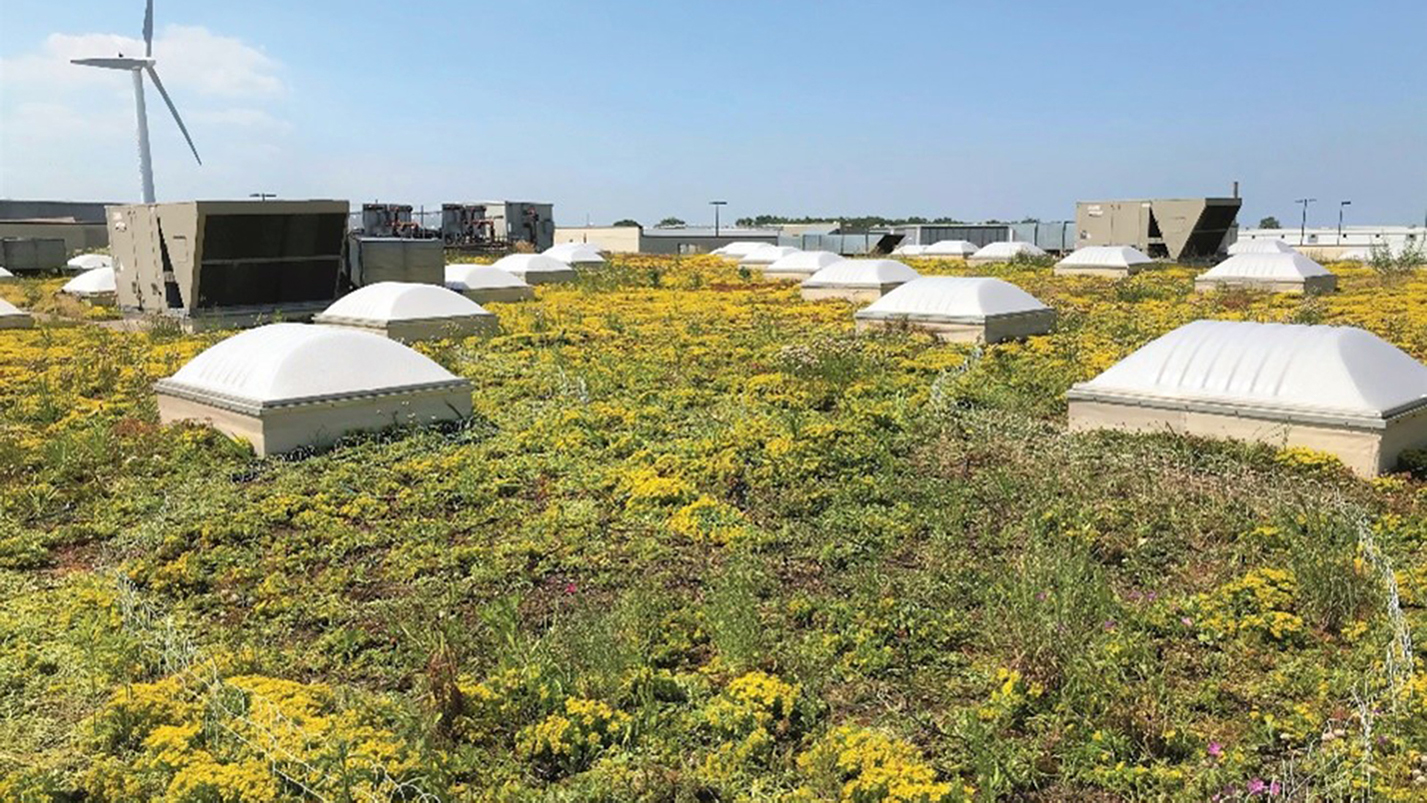City of Honolulu / County of Honolulu
The City of Honolulu has enacted a Stormwater Ordinance in order to establish minimum stormwater management requirements and controls to protect and safeguard the general health, safety, and welfare of the public residing in watersheds within this jurisdiction. The City of Honolulu is the permitting authority for all land disturbing activities and requires the land owner to maintain all on-site stormwater control facilities and all open space areas (e.g. parks or “green” areas) required by the approved stormwater control plan. The City of Honolulu will only provide construction permits to projects that establish a plan to manage stormwater runoff occurring during the construction process. The City of Honolulu, under the NPDES program, also has the authority to inspect properties for noncompliance and can issue a notice of violation (NOV) for any deficiency or infraction onsite. Property owners are responsible for the maintenance of any stormwater facilities or practices located on the property. The City of Honolulu has the authority to inspect stormwater facilities and practices in order to ascertain that they are properly maintained and functioning.
Honolulu Stormwater Laws & Regulations
The City and County of Honolulu regulations are compliant with the National Pollutant Discharge and Elimination System (NPDES) permit requirements for the Municipal Separate Storm Sewer System (MS4) under NPDES Permit no. HI S000002. The Storm Water Quality Branch of the Department of Facility Maintenance administers the permitting and compliance program in the city and county of Honolulu. All projects are required to have an Erosion and Sediment Control Plan (ESCP) approved by the Director of the Department of Facility Maintenance before any development occurs.
20-3-2 Purpose
The Rules Relating to Water Quality apply to all Development and Land Disturbing Activities within the City and County of Honolulu and establish minimum requirements for the selection, design, implementation and maintenance of best management practices (“BMPs”) to protect the MS4 and Receiving Waters from Pollutants that are associated with land disturbance, surface hardening, and land use activities. The pollutants of concern (“POC”) addressed by these Rules include, but are not limited to, sediment, nutrients, trash, pathogens, pesticides, oil, grease, hazardous waste, toxic waste, metals, and organic compounds. The standards and requirements established by these Rules are not a maximum limit to the design requirements for BMPs. Compliance with the minimum requirements and standards established by these Rules does not guarantee that selected BMPs will meet their pollution control and/or drainage objectives. Land owners, design professionals, developers, and contractors are encouraged to implement BMPs that go beyond that requirements of these Rules and seek the advice of other agencies that are responsible for water quality, pollution control, Receiving Waters, water rights, flood plains, and storm water. Compliance with these rules does not excuse violations of State or Federal law, City Ordinances, or permits issued by Department of Planning and Permitting or other permitting authorities.
20-3-6 Enforcement of Post-Construction Violations.
Violations involving the failure to effectively prevent Pollutant Discharges to the MS4 or Receiving Waters and violations involving the failure to properly use or maintain Permanent BMPs may be enforced by the Director of the Department of Facility Maintenance.
20-3-7 Responsible Parties.
The owner of Real property located within the City and County of Honolulu is absolutely responsible for compliance with these rules and shall be held liable for any violations occurring on, or, arising from, their property. In addition, the Director [of the Department of Facility Maintenance] may hold any person that causes, contributes to, or fails to prevent a violation of these Rules responsible for the violation and any penalties for the same. Where more than one person is deemed responsible for a violation, the Director may cite and penalize each responsible person separately or hold one or more responsible parties jointly and severally responsible for the violation and penalty.
20-3-14 Project Categories for Development.
(a) Trenching Permit Projects. Development that requires a trenching permit but does not require a building, grading, grubbing, or stockpiling permit.
(b) Category 1A Projects. Development that requires a building permit but does not require a grading, grubbing, or stockpiling permit shall be classified as a Category 1A Project if it meets all of the following criteria: (1) Residential single-family or two-family detached Development; (2) The total Disturbed Area for the Project is less than 1,000 square feet; and (3) Land Disturbing activities will not occur on slopes equal to or greater than 15 percent at the Site.
(c) Category 1B Projects. Development with less than one acre of Disturbed Area that requires a building permit but does not require a grading, grubbing, or stockpiling permit and does not meet the Category 1A Project criteria shall be classified as a Category 1B Project. -11-
(d) Category 1C Projects. Development that requires a building permit but is not required to obtain a grading, grubbing, or stockpiling permit shall be classified as a Category 1C Project if it involves a Disturbed Area of one acre or more or requires a NPDES General/ Individual Permit Authorizing Discharges of Storm Water Associated with Construction Activity, issued by the DOH.
(e) Category 2 Projects. Development requiring a grading, grubbing, or stockpiling permit shall be classified as a Category 2 Project if the area of the zoning lot or portion thereof subject to the permit is less than 15,000 square feet for single-family or two-family dwelling uses and less than 7,500 square feet for other uses.
(f) Category 3 Projects. Development requiring a grading, grubbing, or stockpiling permit shall be classified as a Category 3 Project if the area of the zoning lot or portion thereof subject to the permit is 15,000 square feet or more for single-family or two-family dwelling uses, or 7,500 square feet or more for other uses, but where the total area graded or stockpiled upon is less than 15,000 square feet for single-family or two-family dwellings uses and less than 7,500 square feet for other uses.
(g) Category 4 Projects. Development requiring a grading, grubbing, or stockpiling permit shall be classified as a Category 4 Project if the total area including any areas developed incrementally that is to be graded, grubbed, or stockpiled upon is 15,000 square feet or more for single-family or two-family dwelling uses, or 7,500 square feet or more for other uses, or in the event a proposed cut or fill is greater than 15 feet in height for single-family or two-family dwelling uses, or 7.5 feet in height for other uses.
(h) Category 5 Projects. Development requiring a grading, grubbing, or stockpiling permit shall be classified as a Category 5 Project if it involves a Disturbed Area of one acre or more and which require a NPDES General/Individual Permit Authorizing Discharges of Storm Water Associated with Construction Activity issued by the DOH.
Supplemental Documents:
Honolulu Storm Water Permitting
Storm Water Program
City and County of Honolulu Stormwater Website

 Kenosha, Wis. Highway KR Regenerative Stormwater ConveyanceThe Root-Pike Watershed Initiative Network Kenosha County, and others worked with AQUALIS to design and implement an innovative solution for stormwater control along Highway KR.
Kenosha, Wis. Highway KR Regenerative Stormwater ConveyanceThe Root-Pike Watershed Initiative Network Kenosha County, and others worked with AQUALIS to design and implement an innovative solution for stormwater control along Highway KR. Durham, N.C. Sinkhole Leads to Stormwater System RehabilitationThe tenant on this property noticed a depression that opened to the ground below and notified the property owners.
Durham, N.C. Sinkhole Leads to Stormwater System RehabilitationThe tenant on this property noticed a depression that opened to the ground below and notified the property owners.

